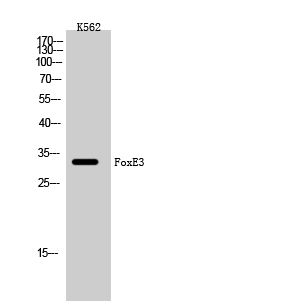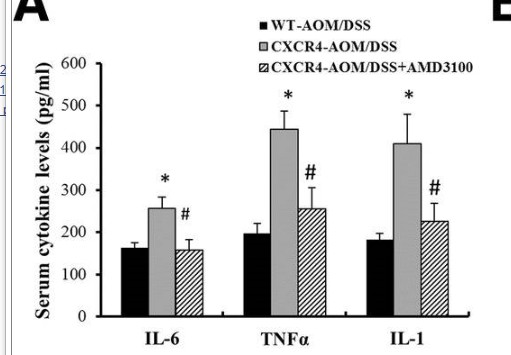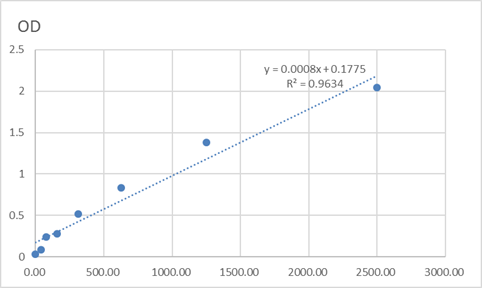
Catalog: KA3714C
Size
Price
Status
Qty.
96well
$330.00
In stock
0
Add to cart


Collected


Collect
Main Information
Reactivity
Human, Mouse, Rat
Applications
ELISA
Conjugate/Modification
Unmodified
Detailed Information
Storage
2-8°C/6 months,Ship by ice bag
Modification
Unmodified
Detection Method
Colorimetric
Related Products
Antigen&Target Information
Gene Name:
FOXE3
show all
Protein Name:
Forkhead box protein E3
show all
Other Name:
FOXE3 ;
FKHL12 ;
FREAC8 ;
Forkhead box protein E3 ;
Forkhead-related protein FKHL12 ;
Forkhead-related transcription factor 8 ;
FREAC-8
FKHL12 ;
FREAC8 ;
Forkhead box protein E3 ;
Forkhead-related protein FKHL12 ;
Forkhead-related transcription factor 8 ;
FREAC-8
show all
Background:
disease:Defects in FOXE3 are a cause of anterior segment mesenchymal dysgenesis (ASMD) [MIM:107250]; also known as anterior segment ocular dysgenesis (ASOD). ASMD includes all malformations involving the first (corneal endothelium and trabecular meshwork), second (corneal stroma) and third (iris stroma) mesenchymal waves of neural crest. The ASMD phenotype is characterized by corneal opacities with or without iris adhesions in 100%, cataracts of varying severity in 100% and optic-nerve abnormalities in 20% of affected individuals.,disease:Defects in FOXE3 are a cause of congenital primary aphakia (CPA) [MIM:610256]. Human aphakia is a rare congenital eye disorder in which the lens is missing. It has been histologically subdivided into primary and secondary forms, in accordance with the severity of defects of the ocular tissues, whose development requires the initial presence of a lens. CPA results from an early developmental arrest, around the 4th-5th week of gestation in humans, that prevents the formation of any lens structure and leads to severe secondary ocular defects, including a complete aplasia of the anterior segment of the eye. In contrast, in secondary aphakic eyes, lens induction has occurred, and the lens vesicle has developed to some degree but finally has progressively resorbed perinatally, leading, therefore, to less-severe ocular defects.,similarity:Contains 1 fork-head DNA-binding domain.,
show all
Function:
eye development, transcription, transcription, DNA-dependent, regulation of transcription, DNA-dependent,transcription from RNA polymerase II promoter, sensory organ development, positive regulation of cell proliferation,RNA biosynthetic process, regulation of cell proliferation, regulation of transcription, regulation of epithelial cell proliferation, positive regulation of epithelial cell proliferation, regulation of RNA metabolic process,
show all
Cellular Localization:
Nucleus .
show all
Reference Citation({{totalcount}})
Catalog: KA3714C
Size
Price
Status
Qty.
96well
$330.00
In stock
0
Add to cart


Collected


Collect
Recently Viewed Products
Clear allPRODUCTS
CUSTOMIZED
ABOUT US
Toggle night Mode
{{pinfoXq.title || ''}}
Catalog: {{pinfoXq.catalog || ''}}
Filter:
All
{{item.name}}
{{pinfo.title}}
-{{pinfo.catalog}}
Main Information
Target
{{pinfo.target}}
Reactivity
{{pinfo.react}}
Applications
{{pinfo.applicat}}
Conjugate/Modification
{{pinfo.coupling}}/{{pinfo.modific}}
MW (kDa)
{{pinfo.mwcalc}}
Host Species
{{pinfo.hostspec}}
Isotype
{{pinfo.isotype}}
Product {{index}}/{{pcount}}
Prev
Next
{{pvTitle}}
Scroll wheel zooms the picture
{{pvDescr}}



















